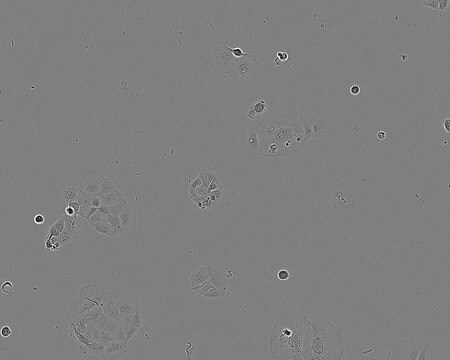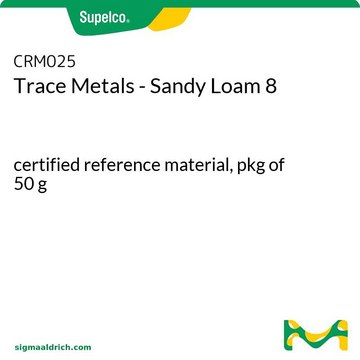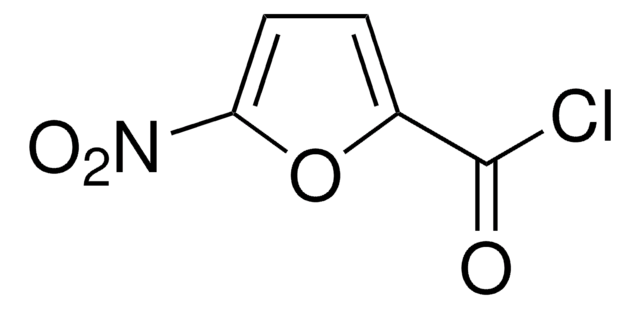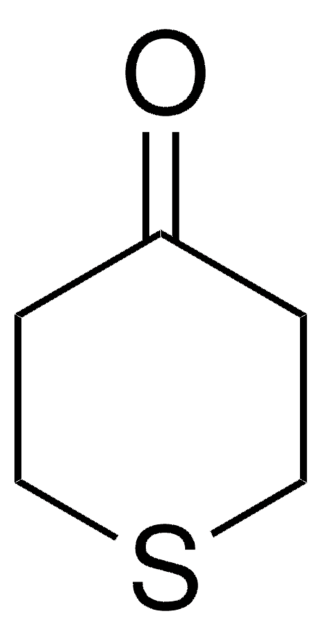MTOX1302Z
MDCKII canine MDR1 KO, human BCRP / human OAT2B1 Expressing Cells
Autenticatiper visualizzare i prezzi riservati alla tua organizzazione & contrattuali
About This Item
Codice UNSPSC:
12352207
NACRES:
NA.81
Prodotti consigliati
Origine biologica
canine kidney (cocker spaniel)
impiego
sufficient for 1 96-well plate(s) (or 24-well plate)
Confezionamento
vial of 2 million cells
Modalità di accrescimento
adherent
tecniche
cell culture | mammalian: suitable
drug transporter assay: suitable
applicazioni
ADME/TOX
Condizioni di spedizione
dry ice
Temperatura di conservazione
−196°C
Descrizione generale
MDCKII - Madin-Darby canine kidney - is a subclone derived from the heterogenous parent line MDCK (ECACC Catalog No. 85011435). MDCKII cells, which predominate in later passages from MDCK, are reported to display electrical resistance of 100 ohm/cm2. This cell line is thought to be derived from the distal tubule or collecting duct of the nephron. The cell line can be used as an experimental model to study the generation and maintenance of cell surface polarity in epithelial cells.
Applicazioni
ATP-binding cassette (ABC) transporters are a family of transmembrane proteins that utilize ATP hydrolysis for translocation of substrates across membranes. ABC transporters are known to play a critical role in the development of multidrug resistance. Evaluation of membrane transporter pharmacology in drug disposition and drug-drug interactios (DDI) is critical to the pharmaceutical safety evaluations of new drug entities. Selection of the targeted gene(s) was based on the considerable body of evidence supporting its crucial role in the development of multidrug resistance.
These cells can be used in transwell permeability assays to measure the movement of substrates through the monolayer. Efflux ratios for test compounds can be determined using standard compounds as controls.
These cells can be used in transwell permeability assays to measure the movement of substrates through the monolayer. Efflux ratios for test compounds can be determined using standard compounds as controls.
Caratteristiche e vantaggi
CompoZr® zinc finger nuclease (ZFN) technology is a fast and reliable way to manipulate the genome in a targeted fashion. ZFNs are naturally occurring proteins that can be engineered to bind DNA at a sequence-specific location and create a double strand break. The cell′s natural machinery repairs the break in one of two ways: non-homologous end joining or homologous recombination. The non-homologous end joining pathway typically produces small modifications (indels) at the targeted locus that may result in a functional knockout. Single cell clones are then isolated, tested for the desired modification and expanded to establish a stable cell line.
The canine MDR1 (cP-gp) efflux transporter gene has been effectively disrupted in both alleles. There is no expression of the cP-gp. Validation studies have shown no efflux of standard cP-gp substrates.
The human BCRP and OAT2B1 efflux transporters have been expressed in these cells via viral transduction. Validation studies have shown efflux ratios ≥2 for common substrate estrone-3-sulfate.
The canine MDR1 (cP-gp) efflux transporter gene has been effectively disrupted in both alleles. There is no expression of the cP-gp. Validation studies have shown no efflux of standard cP-gp substrates.
The human BCRP and OAT2B1 efflux transporters have been expressed in these cells via viral transduction. Validation studies have shown efflux ratios ≥2 for common substrate estrone-3-sulfate.
Qualità
Tested for Mycoplasma, sterility, post-freeze viability, and short terminal repeat (STR) analysis for cell line identification
Note legali
These products are covered by the ADME/Tox Cell Lines License as described in Exhibit 1, in the technical bulletin.
MDCKII sublone was originally isolated by Daniel Louvard, Institut Curie, Paris France.
References: Hansson, G.G., Simons, K and Van Meer G (1986) EMBO 5: 483-489, Louvard D (1980) PNAS 77; 4132-4136
MDCKII sublone was originally isolated by Daniel Louvard, Institut Curie, Paris France.
References: Hansson, G.G., Simons, K and Van Meer G (1986) EMBO 5: 483-489, Louvard D (1980) PNAS 77; 4132-4136
CompoZr is a registered trademark of Merck KGaA, Darmstadt, Germany
Raccomandato
N° Catalogo
Descrizione
Determinazione del prezzo
Codice della classe di stoccaggio
10 - Combustible liquids
Classe di pericolosità dell'acqua (WGK)
WGK 2
Punto d’infiammabilità (°F)
Not applicable
Punto d’infiammabilità (°C)
Not applicable
Scegli una delle versioni più recenti:
Certificati d'analisi (COA)
Lot/Batch Number
Non trovi la versione di tuo interesse?
Se hai bisogno di una versione specifica, puoi cercare il certificato tramite il numero di lotto.
Possiedi già questo prodotto?
I documenti relativi ai prodotti acquistati recentemente sono disponibili nell’Archivio dei documenti.
S Simon et al.
Biochimica et biophysica acta, 1821(9), 1211-1223 (2012-06-14)
Phospholipids are widely used excipients for pharmaceutical formulations, such as for preparing biphasic systems or to solubilize or encapsulate poorly soluble drugs. The present study investigates a new property of this class of substance: its ability to inhibit the efflux
Il team dei nostri ricercatori vanta grande esperienza in tutte le aree della ricerca quali Life Science, scienza dei materiali, sintesi chimica, cromatografia, discipline analitiche, ecc..
Contatta l'Assistenza Tecnica.







